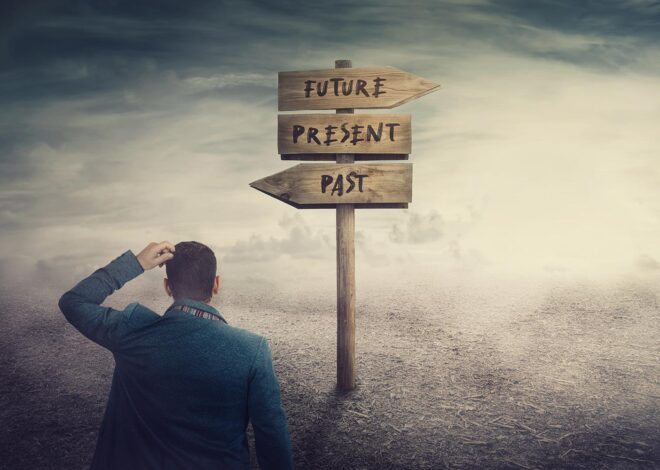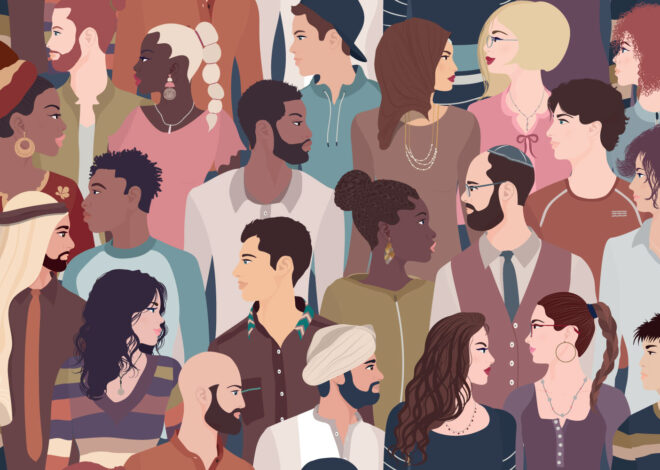Link Arms to Elevate Your Nonprofit’s Impact
Working with like-minded people and organizations can create a deepened impact, more sustainable relationships, and a stronger funding pool for your mission.

The right collaborations can enhance your nonprofit’s work and elevate your impact.
The highest functioning nonprofit teams have one thing in common — we invest deeply and consistently in partnerships.
I started my nonprofit career, many years ago, doing needle exchange in nearly a dozen San Francisco neighborhoods. At San Francisco AIDS Foundation/HIV Prevention Project, everyone on the team participated in our core service, no matter their title. As the volunteer coordinator, I recruited and trained community members on harm reduction, both as a theoretical framework and as a practice.
From there, team members, volunteers, community members dealing with substance use, and health centers around the city worked together to increase the health and well-being of substance users. I personally witnessed many substance users leverage our network to make dramatic positive shifts in their health. That success was possible because we strategically collaborated to make it possible.
Collaborative Manifestations
There are several kinds of collaborations that can enhance your work and elevate your impact. Let’s take a look at three of the most common, and, in my opinion, the most effective.
1: Direct Community Collaboration
This first variety is probably the most essential. However, it is also iterative in that it is a process. In this collaboration, nonprofits (like businesses) identify our core audience (who benefits from our existence), open dialogues with those beneficiaries to test our assumptions, and then shift our offerings to match the true needs that community members themselves identify. Every step in this process is integral to the collaboration itself.
Similarly, this process of community partnership to develop and consistently evolve our mission/vision/values is essential to ensuring an organization can truly deliver a positive social impact. It moves us beyond outdated paternalistic approaches to social good that equate a willingness to help and access to resources with the expertise and cultural understandings to make relevant and effective offerings.
2: Connecting with Complimentary Sibling Organizations
This second type of collaboration is also critical to sustainability and growth. When I led a career development nonprofit in Oakland, Wardrobe for Opportunity, we partnered with more than a dozen organizations whose services complimented our own. Community members who may have been receiving housing support through the sibling organization would then be encouraged to make an appointment to receive clothing and professional development classes at WFO, and our team could provide further referrals for economic mobility supports at another partner agency. We worked together and achieved greater impact than any one of our organizations could have accomplished alone.
3: Identifying Foundational Partners
All social impact leaders know that the funding of our long-term strategic plans is fundamental to the successful delivery of our stated impact. Developing and maintaining generative relationships with funding partners is underrated in its ability to produce joy for those doing this core work.
While fundraising can feel daunting and scary, the fear and trepidation goes away when we realize that the key element of this work is not, in fact, begging for money. Instead, this is about developing regularly evolving systems of communication, evaluation, and change while building relationships with people who share your vision for a better world.
In my current work as Executive Director at Hunters Point Family, where we prepare young people in San Francisco’s toughest neighborhoods to become adults who thrive, I sustain a generative relationship the San Francisco Department of Children Youth and Families. As a funding partner, their mission and that of Hunters Point Family are aligned: Both work to ensure the physical, emotional, and intellectual well-being of young San Franciscans. As an agency, we show ourselves to be a good partner by consistently tracking our impact and regularly communicating both our impact and our needs back to the DCYF and other funders. In addition, we make use of the supports they offer and strictly follow the guidelines set out in our agreements with them.
When to Use Collaboration
Of course, anytime is a good time for collaboration, but it can also be especially useful if your nonprofit has hit a bit of a rough patch. If your nonprofit is struggling with challenges that feel insurmountable, for example, the problem may not be the complexity of the issues; it might be the need for a longer bench of partners.
To determine whether additional partners can help you solve your current difficulties, ask yourself these key questions.1
1. Are we collaborating with the community members we seek to serve?
This question is essential to an organization’s ability to understand the breadth and depth of its impact. Our impact only goes as far as our intimacy with those most affected by the problems we’re trying to help solve. Only in conversation with the experts — those we serve — are we able to develop and execute solutions that work.
2. What voices are not represented by our current collaborations?
If the global uprisings for Black lives and pandemic of the last 5 years have taught us anything, it is the extent to which our societies must amplify the voices that have been most left out of decision-making — in order to build a world where no one is disenfranchised, hungry, unhoused, or without proper healthcare. The benefit of rigorous inclusion is that our solutions then account for blind spots we might have in relations to life experiences that differ from our own.
3. What mission-aligned organizations are we partnering with?
The benefit of this question is that it causes organizations to think beyond our day-to-day efforts, which can feel consuming at times. When we pull our heads up from the work to seek support, we realize we are not alone. We may even be able to upgrade our impact by linking our mission with another.
4. What partnerships have outlived their usefulness?
An effective and sustainable leader must know how to pivot. Good leadership is not about finding a comfortable pocket of work and sticking with it forever; it is instead marked by forward thinking and the willingness to anticipate and execute key shifts when it’s time. Welcoming and acting on needed changes ensures your mission and your team remains dynamically connected to those changes you’re making.
5. What narrative do I have about my relationship with funding partners?
Fundraising is more about understanding people (both in general and specifically) than it is about money. I know, I know…it sounds odd. But, if you don’t develop your own particular positive approach to relating with funding partners, you’ll find the money dries up quickly.
As a social impact leader, you are very likely people-driven. This question allows you to use your strengths to bring in the necessary capital that will help prove your theory of change. Focus on the people with whom you’re in funding relationships and make sure you can get excited about what drives them. This practice, combined with a data-backed mission, will take you a long-way in your fundraising efforts.
6. How does my organization ensure our timely and consistent communications with funding partners?
We’re in the age of technology, and it is our duty to leverage the high-speed tools that exist to become more efficient: Think calendars, CRMS, and even funder relations software. When our operations are running smoothly, it frees up team members to focus on ensuring that our mission, vision, and values are executed in world-class fashion.
As I say this, I acknowledge that for many organizations, getting our tech flowing can be daunting and require investments that feel elusive. If you don’t currently have the funding to support huge tech investments, use the myriad of free tools out there until you do. Having something in place to track your work, your relationships with donors and community, and your connections with grant-makers is better than having nothing or tracking on the fly. This question will help your organization become and stay as tech-forward as possible.
7. Beyond mere communication, how often do we connect with our funding partners so they can see the impact of their funding?
This question is important because one thing funders say consistently is that they want to hear from you between funding cycles. Just like we don’t want friends who only talk to us when they need money, or politicians who only pay attention to certain constituents when they need votes, funders want to hear from organizations throughout the funding year. They want to know stories of your impact, which is also their impact.
This question should remind you to calendar regular communications with your funders. It also ensures that when they meet to determine which organizations to fund, you are top of mind. And if someone asks them about your impact, they know.
8. What learning tools2 can I provide my team to begin to build or to enhance our culture of collaboration?
Work trauma is real. Most people have experienced it, so creating a culture of collaboration can be tricky. However, most of us have also experienced the pain and inefficiency caused by working in silos.
To wit, this question does two things:
- It suggests that the creation of a collaborative culture starts at the top through leadership providing tools.
- It acknowledges that culture is a process of building, not a quick destination we can all hop on the train to arrive at.
This question might even be re-written to use in a staff meeting to help leaders find out what your specific team needs.
Now that we have some initial scaffolding questions out of the way, we need to figure out how to make a great nonprofit collaboration. After all, the last thing your nonprofit needs is one more task that is going to take away time and resources without giving back. So what makes a great nonprofit collaboration?
There are five key elements to a successful social impact partnership.
1. Alignment
The shared need for more partners is NOT enough. You want to connect with organizations whose purpose and trajectory is a great match for yours. If one organization is working to save the whales and another is working to build soccer fields around the city, it’s not a match. However, if an organization is working to save the whales and another is planting native greenery along an estuary, there might be some alignment in terms of their shared work to protect our environment.
Once you determine where your missions overlap, you also want to think about whether you’re aligned in where you’re headed. Aligned organizations moving in opposite directions are not a match. Two or more organizations are aligned if their missions are compatible, their strategic directions are well-matched, and the outcomes of working together are greater than those of working apart.
This also means staying in your own lane, as it were. Or as Tifany Boyles stated in a previous Blue Avocado article: “Some of the simplest yet most brilliant partnerships come from organizations that do great work in their own lane and refer out to other strong organizations for added services.” Most organizations must respond to systemic challenges with limited resources. Continuously improving our focused services and then partnering with others with different expertise represents not only good resources stewardship, it’s also smart business.
2. Focus
Great nonprofit partnerships are clear about the focus of the collaboration, so you should make sure there’s an MOU3 or some form of written agreement.
The specific impacts each organization will see in the shared communities (and the role each partner plays in delivering that impact) should be clearly defined and agreed upon (hopefully beforehand). The same goes for each organizations team members who will be involved as well as for what percentage, at what intervals, and for how much of the calendar year.
Lastly, this formal agreement should also articulate how each organization will talk about the partnership when reporting to the general public, stakeholders, and/or funding partners.
3. Calendared Communications
If it’s not on your calendar, it won’t happen. When it comes to successful partnerships, they belong on the team calendar with everything else an organization wants to accomplish (mission delivery, fundraising, etc.). All of your partnerships — with the community, with sibling-organizations, and with funders — need check-ins throughout your fiscal year.
If you take nothing else from this article, please know that building a calendar around your partnership communications will super-charge your success. The people we communicate with most regularly are the ones on our minds when challenges need to be avoided and when opportunities arise.
With that in mind, you want to sustain partnerships that inspire your collaborators to think of you first when there is important information to be shared. Regular, scheduled communication can be the difference between a wildly successful collaboration and one that falls flat.
4. Evaluation
In the same way that assessment is core to programmatic growth, evaluating the shared metrics of our partnerships is central to knowing what’s working, what isn’t, and what needs to be tweaked. The formal agreement referenced above (ex. an MOU) should include the methods and the timespan for this evaluation of collaborative work. It should also stipulate how the success metrics will be delineated between the two or more agencies involved.
5. Cross-Marketing
If no one knows about your organization’s collaborations, you are definitely NOT receiving the proper return on your investment. It is essential that in the process of developing new partnerships, you take the time to develop cross-marketing materials. This might be as simple as community flyers with both organizations’ logos prominently displayed or highlights of your partnerships in your agency newsletter and on socials.
With your funding partners, don’t hesitate to celebrate the wins of your partner agencies and encourage them to celebrate yours. Your work is stronger together, no matter the audience. Mature organizations (and leaders) understand the power of sharing the spotlight.
Remember, we are stronger together.
By now, you might have noticed that all the measures of a strong collaboration are linked. Alignment, focus, communication, evaluation, and cross-marketing all follow from each other and overlap often. Just as the best collaborations are closely knit, having multiple points of overlap among these systems is crucial to ensuring the success of your collaboration.
Of course, when organizations are first developing a culture of collaboration, this can be challenging. Many nonprofits may be in the habit of doing work alone, siloed.
But like everything great, successful partnerships will become second nature to your organization via strong systems and regular practice. The triple benefits of deepened impact, more sustainable relationships, and a stronger funding pool make the effort of linking arms with others well worth it.
Additional Resources
These books should help you develop (or strengthen) your partnership model. I’d encourage you to read and share with your team!
And in the interest of collaboration: Feel free to comment below if you have additional resources that you’ve found helpful!
Forging Nonprofit Alliances: This work invites leaders to think more broadly about the “how” when planning an organization’s sustainability. It’s useful because it’s not only a solid read on partnerships but also has practical tools so you can use it as a workbook.
Partnerships that Last: This is an evidence-based guide to partnerships. You can use this text to understand what’s worked across many organizations in different sectors. If having lasting partnerships is something important to you, this is a good read.
Radical Collaboration: While the other two selections focus on what works overall in terms of connecting organizations, this book focuses on the internal dynamics of individuals and groups seeking to collaborate. Potentially the most important and helpful of the three, this book provides insight into the internal challenges that arise when trying to work together, offering tools to move beyond those issues. For me, the internally reflective approach offered here can be slower but affords more lasting impacts in terms of the success of collaborations.
- For more, check out this checklist! ↩︎
- In terms of that last question, I recommend reading/or listening to those books linked in the additional resources section. If you are in leadership in your organization, at any level, engage the resources yourself first, summarize them for your team, and get a conversation going as soon as you can. Once you’ve asked the above questions and done your own learning, you’re ready to embark on stronger and more prosperous partnerships. ↩︎
- A formal agreement or Memorandum of Understanding (MOU) is a great tool for developing strong and long partnerships. Many of the challenges nonprofit partners encounter has to do with a lack of clarity. While an MOU doesn’t have all the complexities of a lawyer-penned business contract, it does ensure that all parties know what is expected of them and what they can expect of their partners. When questions arise in the delivery of services, the MOU can be an effective device to get team members back on track. ↩︎
About the Author
Darice M. Jones is an executive director, leadership coach, dream worker, and writer/director with more than a decade experience in collaborative leadership and securing resources in service of an equitable and inclusive society. Darice envisions a world that values the physical, emotional, and mental well-being of all. Darice works across social movements: From her current leadership at Hunters Point Family in San Francisco to global work in transitional justice, founding and leading the international phenomenon that is Bijou Film Festival, and supporting the leadership at Young Women’s Freedom Center at the forefront of the abolition movement on the West Coast. Darice is a born collaborator and is open to new partnerships at daricejones@hunterspointfamily.org.
Articles on Blue Avocado do not provide legal representation or legal advice and should not be used as a substitute for advice or legal counsel. Blue Avocado provides space for the nonprofit sector to express new ideas. Views represented in Blue Avocado do not necessarily express the opinion of the publication or its publisher.











